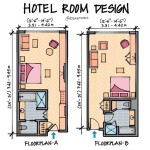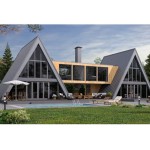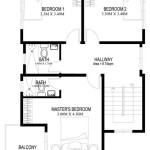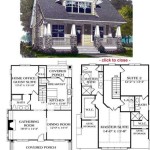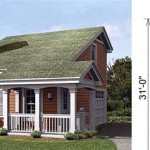Simple Kitchen Floor Plan With Dimensions In Cms Guidelines
Designing a functional and aesthetically pleasing kitchen requires careful planning, especially when adhering to specific dimensional guidelines. A well-designed kitchen floor plan must consider workflow, storage, appliance placement, and sufficient circulation space. Using centimeters (cms) as the unit of measurement provides precision and accuracy in translating the design onto the actual construction. This article will explore essential elements of a simple kitchen floor plan, focusing on dimensions in centimeters and relevant guidelines to optimize space utilization and functionality.
A kitchen floor plan is a scaled diagram depicting the layout of the kitchen, including walls, doorways, windows, appliances, cabinets, and work areas. It serves as a blueprint for construction and remodeling, ensuring that all components fit together seamlessly and that the final space meets the user's needs. The dimensions in centimeters provide a detailed representation, allowing for accurate calculations and precise installation of various kitchen elements. A well-prepared plan is crucial in avoiding costly mistakes and maximizing the efficiency and usability of the kitchen.
Before embarking on the design process, it is crucial to define the scope of the project and identify the goals for the kitchen. Factors to consider include the size of the kitchen, the budget, the desired style, and the specific needs of the individuals who will be using the space. For instance, a family that enjoys cooking together may require a larger kitchen with multiple work zones, while a single individual might prefer a compact and efficient design. Identifying these requirements upfront will help guide the design process and ensure that the final kitchen meets the user's specific needs.
When creating a kitchen floor plan with dimensions in cms, it is essential to use appropriate software or tools to accurately represent the space and its components. Computer-aided design (CAD) software or online kitchen planning tools can be valuable resources. These tools allow users to draw the floor plan to scale, insert appliances and cabinets, and visualize the layout in 2D or 3D. Using such tools ensures that the dimensions are accurate and that the design adheres to relevant guidelines and building codes.
Understanding Key Kitchen Dimensions in Centimeters
Accurate dimensions are the foundation of a successful kitchen floor plan. Precise measurements in centimeters provide a solid foundation for the entire design and construction process. Several key dimensions impact the functionality and comfort of the kitchen.
Firstly, consider the working triangle. This imaginary triangle connects the sink, refrigerator, and cooktop, forming the primary work zone in the kitchen. The total length of the triangle's sides should ideally fall between 400 cm and 790 cm. Each leg of the triangle should measure between 120 cm and 270 cm. These dimensions ensure that the essential cooking tasks can be performed efficiently without excessive walking distances.
Countertop height is another critical dimension. Standard countertop height is typically between 90 cm and 92 cm. This height is suitable for most adults and allows for comfortable food preparation. However, individuals with specific needs may require a higher or lower countertop. For example, individuals using wheelchairs may benefit from a lower countertop height to allow for easier access. The depth of standard base cabinets is generally 60 cm, including the countertop overhang. Maintaining this depth ensures ample workspace and storage within the kitchen.
Upper cabinets are typically installed 45 cm to 50 cm above the countertop. This clearance provides sufficient space for small appliances and allows for comfortable food preparation on the countertop. The depth of standard upper cabinets is usually 30 cm, allowing for storage of dishes, glassware, and other kitchen items. The overall height of the upper cabinets varies depending on the kitchen's ceiling height and the desired storage capacity. In kitchens with higher ceilings, taller upper cabinets can be installed to maximize storage space. However, it is essential to ensure that the upper cabinets are easily accessible.
Aisles and walkways are crucial for ensuring comfortable movement within the kitchen. The minimum width for a single-cook kitchen aisle should be 90 cm. This allows ample space for one person to move around comfortably. For a two-cook kitchen or a kitchen with a lot of traffic, the minimum aisle width should be 120 cm. This ensures that multiple individuals can move around the kitchen without bumping into each other. Consider the space in front of appliances like the dishwasher and refrigerator when planning aisles. The door swing of these appliances should not obstruct pathways. The space in front of the dishwasher should be at least 75cm wide if it's frequently used.
Island dimensions also play a significant role in the kitchen's functionality. A kitchen island can provide additional countertop space, storage, and seating. The size of the island should be proportional to the size of the kitchen. The minimum aisle width around the island should be 90 cm, although 105 cm to 120 cm is preferable. The island's height can vary depending on its function. A standard countertop height island is suitable for food preparation, while a bar-height island is ideal for casual dining or socializing. The depth of the island can also vary depending on the desired storage capacity. Island countertops are commonly 60cm to 90cm, but some are wider.
Designing Different Kitchen Layouts with Dimensions
Several common kitchen layouts cater to various space constraints and design preferences. Each layout presents unique challenges and opportunities for optimizing space utilization.
The single-wall kitchen layout is suitable for small spaces or apartments. In this layout, all appliances, cabinets, and countertops are arranged along a single wall. The total length of the single wall will depend on the available space but planning for at least 240 cm is advisable to accommodate essential appliances and work areas. The depth of the countertops and cabinets will typically be 60 cm. Consider maximizing vertical space with tall cabinets to compensate for the limited horizontal space.
The galley kitchen, also known as a corridor kitchen, features two parallel rows of cabinets and countertops. This layout is efficient for smaller spaces, but adequate aisle width is crucial. The minimum aisle width between the two rows of cabinets should be 120 cm. This allows for comfortable movement between the two work areas. The depth of the cabinets and countertops on each side will typically be 60 cm. The total length of the galley kitchen will depend on the available space, but planning for a minimum of 240 cm on each side is advisable.
The L-shaped kitchen layout is versatile and suitable for a variety of kitchen sizes. In this layout, the cabinets and countertops are arranged along two perpendicular walls. The length of each wall will depend on the available space, but planning for a minimum of 240 cm on each side is advisable. The depth of the cabinets and countertops will typically be 60 cm. Consider placing the sink on one leg of the L and the cooktop on the other to create an efficient working triangle.
The U-shaped kitchen layout offers maximum countertop space and storage. This layout involves cabinets and countertops arranged along three walls. The minimum distance between facing cabinet runs in a U-shaped kitchen should be 150cm to allow two people to easily pass each other. The depth of the cabinets and countertops will typically be 60 cm. The total length of each wall will depend on the available space, but planning for a minimum of 240 cm on each side is advisable. The U-shaped layout is ideal for larger kitchens and provides ample space for multiple cooks.
The island kitchen layout combines a traditional kitchen layout, such as an L-shaped or U-shaped layout, with a freestanding island. The island kitchen layout can add extra countertop space, storage, and seating. The dimensions of the island should be proportional to the size of the kitchen. The minimum aisle width around the island should be 90 cm, although 105 cm to 120 cm is preferable. The island's height can vary depending on its function. A standard countertop height island is suitable for food preparation, while a bar-height island is ideal for casual dining or socializing. The depth of the island can also vary depending on the desired storage capacity. Island countertops are commonly 60cm to 90cm, but some are wider.
Adhering to Guidelines and Building Codes in Centimeters
When designing a kitchen floor plan, it is essential to adhere to relevant guidelines and building codes. These regulations ensure the safety and functionality of the kitchen.
Consider electrical codes, which dictate the placement of outlets and wiring. Outlets should be placed at regular intervals along the countertops to provide convenient access to power for small appliances. A dedicated circuit should be provided for major appliances, such as the refrigerator, cooktop, and oven. The placement of lighting fixtures should also be carefully considered to ensure adequate illumination of the work areas. Recessed lighting, under-cabinet lighting, and pendant lighting can be used to create a well-lit and visually appealing kitchen.
Plumbing codes dictate the placement of water supply lines and drain pipes. The sink should be located near existing plumbing lines to minimize the cost and complexity of the installation. A garbage disposal unit can be installed under the sink to facilitate food waste disposal. Consider water filtration systems to improve the quality of the drinking water. The dimensions of the plumbing fixtures and appliances should be accurately represented in the floor plan to ensure proper fit and function.
Ventilation codes address the removal of smoke, steam, and cooking odors from the kitchen. A range hood should be installed above the cooktop to effectively vent these contaminants outside the home. The range hood should be sized appropriately for the cooktop and should be installed at the correct height. Proper ventilation is crucial for maintaining air quality and preventing the buildup of grease and odors in the kitchen.
Accessibility guidelines are important for designing kitchens that are accessible to individuals with disabilities. Countertops should be installed at a lower height to accommodate individuals using wheelchairs. Aisles should be wide enough to allow for wheelchair maneuverability. Appliances should be selected with easy-to-use controls. Storage should be accessible from a seated position. Adhering to accessibility guidelines ensures that the kitchen is functional and inclusive for all users.
In conclusion, creating a simple kitchen floor plan with dimensions in centimeters requires careful consideration of various factors, including kitchen layout, appliance placement, aisle widths, and adherence to building codes. By paying attention to these details, one can design a kitchen that is both functional and aesthetically pleasing, meeting the specific needs of its users. Accurate dimensions in centimeters are the foundation for a successful kitchen design, ensuring precise installation and optimal space utilization.

7 Types Of Kitchen Floor Plans With Dimensions Foyr Neo

7 Types Of Kitchen Floor Plans With Dimensions Foyr Neo

Kitchen Floor Plan Guide Layouts Tools Designs Tips

Useful Kitchen Dimensions And Layout Engineering Discoveries

Free Editable Kitchen Layouts Edrawmax

Kitchen Floor Plan Guide Layouts Tools Designs Tips

Kitchen And Dining Area Measurements Standards Guide

Free Editable Kitchen Layouts Edrawmax

Kitchen Island Dimensions Essential Size Guide July 2025

12 Examples Of Floor Plans With Dimensions
Related Posts

